-
Posts
19,403 -
Joined
-
Last visited
Content Type
Profiles
Forums
Articles
Gallery
Downloads
Events
Posts posted by JHCC
-
-
A 2009 film showing production of high-quality files. The narration is in German, but auto-translated subtitles are available in Settings.
-
Document protectors are great. You can take the pages out to make notes, and the protectors keep those sheets clean the rest of the time. You can also make temporary notes on them with a grease pencil and wipe them off later (check first to make sure the specific pencil is compatible with the specific protector, though).
I have photocopies of my Hossfeld bender’s manual and the Hossfeld catalog in sheet protectors and a binder for shop use, keeping the originals on the shelf of my smithing library.
-
"Give me a place to stand, and I will move the earth." -- Archimedes
-
Δῶς μοι πᾶ στῶ καὶ τὰν γᾶν κινάσω.
-
Very nice. Maybe add a sail of woven wire mesh, perhaps in brass or copper?
-
I'd put my money on the "72" actually being a "12" with a rather strong upstroke on the "1". In the hundredweight system, that would make your anvil (1 x 112 lbs.) + (3 x 28 lbs.) + (12 x 1 lb.) = 112 + 84 + 12 = 208 lbs.
21 hours ago, Irondragon Forge ClayWorks said:We have some members in and around Ohio, who knows maybe some close enough to visit and lend a hand.
In Columbus, I strongly recommend connecting with Adlai Stein at the Central Ohio School of Metalwork, as well as Southern Ohio Forge and Anvil (SOFA), the local branch of the Artist Blacksmith Association of North America. In addition to their regular meetings and classes, SOFA also hosts the annual Quad-State Blacksmiths Roundup in Troy, which draws folks from all over the world.
-
1 hour ago, Scott NC said:
Marionettes can be quite intricate, but it would have to be small to keep the weight down.
If you're willing to create a sufficiently beefy support mechanism, size is no limit.
-
17 hours ago, Frosty said:
Pretty slick, thanks for the link John.
Frosty The Lucky.
Kim's videos are generally worth watching. He's got a series running right now showing the process of him restoring and 18th century spitjack, a clockwork mechanism for slowly turning a roasting spit by the fire.
-
16 hours ago, Frosty said:
cerbirdrus(?)
Fun fact: it has been argued that Cerberus, the three-headed dog that guards the entrance to the underworld in Greek mythology, gets his name from a proto-Indo-European *k̑érberos, meaning "spotted". While there are competing theories about the derivation, if this one is true, it means that Hades, the god of the dead, named his dog "Spot".
-
No, it’s from one of a pair of stands given to me by a friend. Not sure what the original use was, but they had 12” square steel plates on top. I still use the other one as a moveable stand for tools, moving it next to whatever I’m working on at the moment.
-
I stole the basic idea from Kim Thomas, who has such a hold-down incorporated in his “chisel stand”.
My innovations were to eliminate the work surface, make the height adjustable, change the shape of the hold-down from an upside-down “U” to a double “T” (thus allowing the stock to be moved in and out of the sides rather than being threaded in from the end), and (now) adding the foot lever. I also added a guide to keep the counterweight from swinging around.
-
-
Finished the tongs.
Not 100% happy with them, but it’s too late in the evening to do any more fiddling.
7 hours ago, bluerooster said:What is the class?
I’ve got half a dozen total beginners coming over tomorrow. They will each make a bottle opener from 3/8” square bar.
I also made a pointer to use during class, based on the one I saw Carl West using last week.
-
I am teaching a class on Sunday, so I need half a dozen pairs of 3/8” bolt tongs. Here’s the prototype; I’ll make the rest tomorrow.
These are made from two 16” lengths of 1/4” x 1/2” flat bar, shouldered, tapered, twisted, bent, with the bits shaped on the fly press with the fuller & swage I made yesterday, and riveted. The first pair took about an hour, but I think I should be able to bring that down.
-
-
Ask, and you shall receive:
-
-
While browsing the website of my favorite industrial surplus warehouse, I encountered an old Walker Turner drill press which appears to have an interesting power feed.
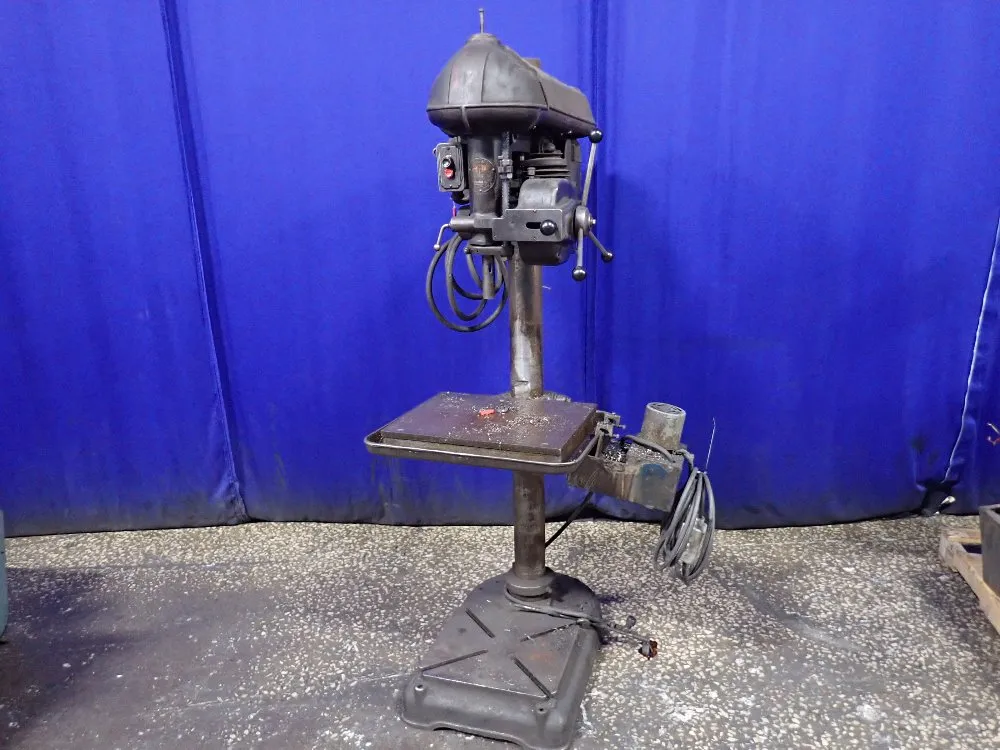
It looks like the lever in the front engages and disengages the feed:
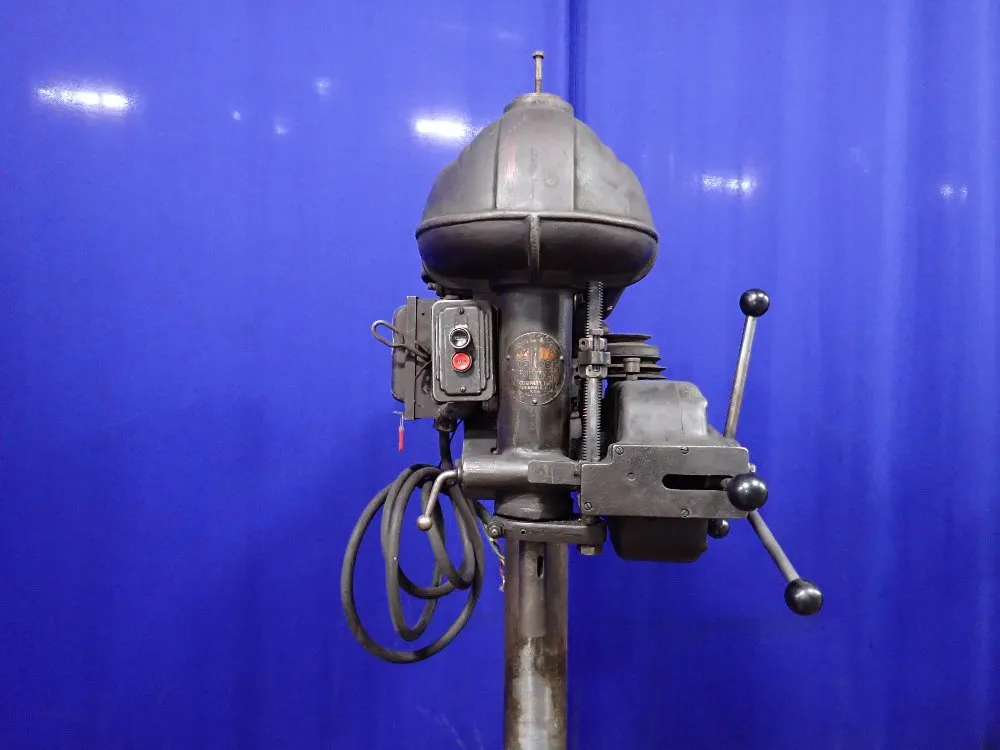
Which is powered by pulleys taking power off the main motor:
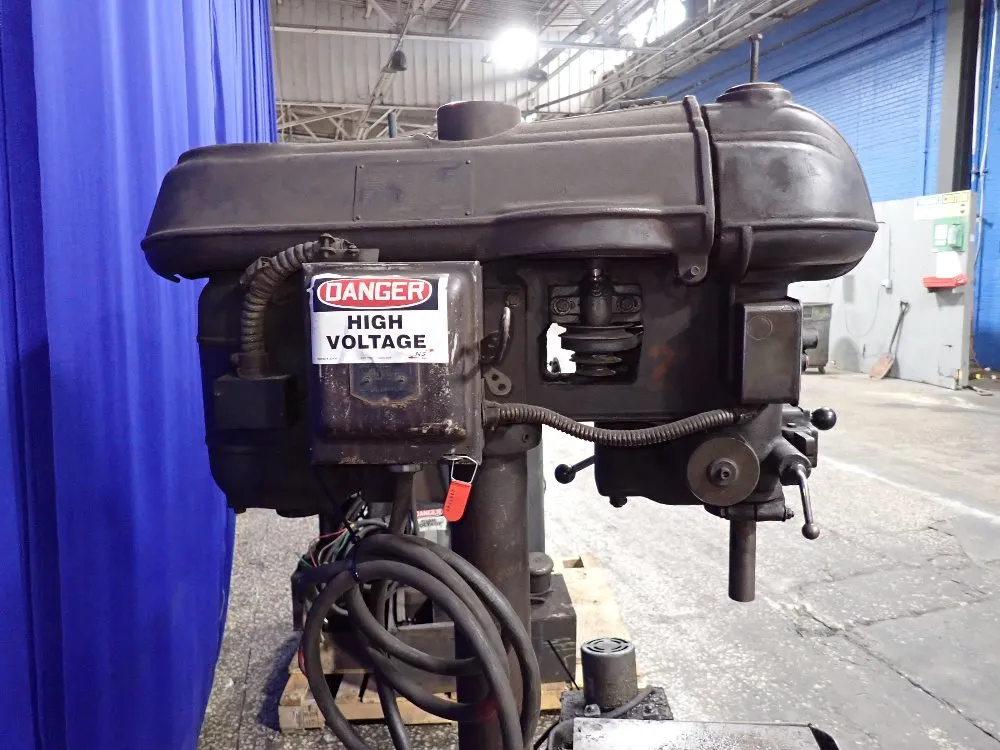
I'm guessing that this doesn't have a reversing mechanism, but that the standard return spring takes it back up. No idea if it has anything that automatic disengages at a preset drilling depth or if the operator has to manually disengage the feed.
I'm not sure what this thing attached to the side of the table is, but I suspect it might be a pump for lubricating oil.
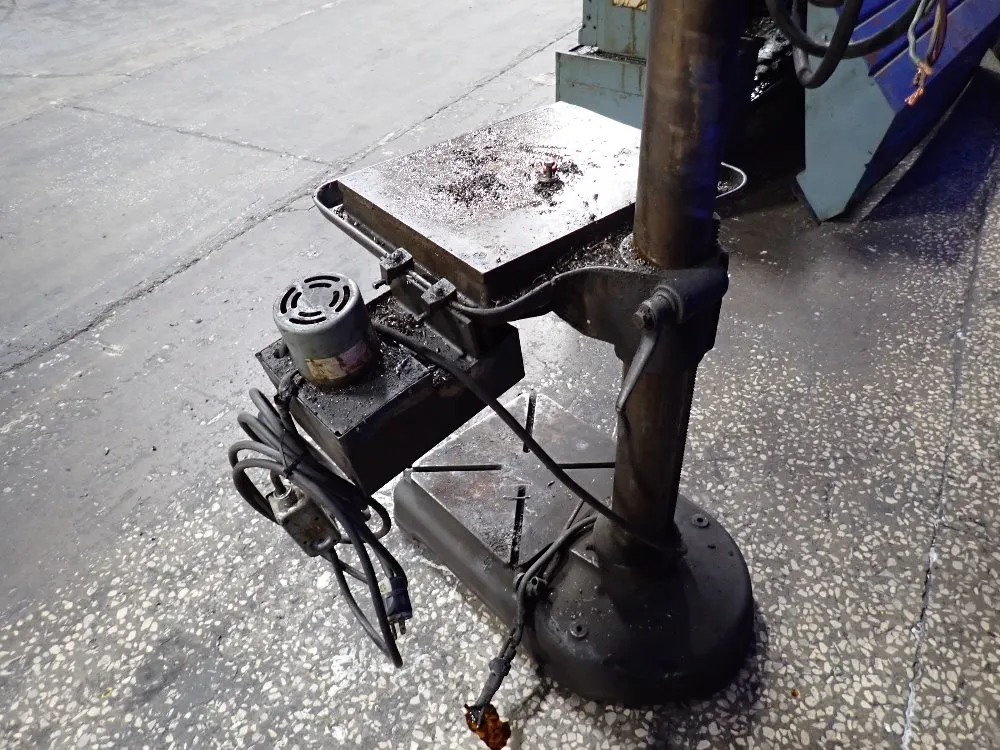
I doubt I'll be purchasing this, as I already have a drill press and would need to switch out the three-phase motor on this one for a single-phase. Nonetheless, I thought folks here might be interested in seeing a cool bit of old-school machinist tech.
-
I think that's either misspelled or misread. Here's an image of an 18th century blacksmith's tombstone from Wales with what appears to be the same poem:
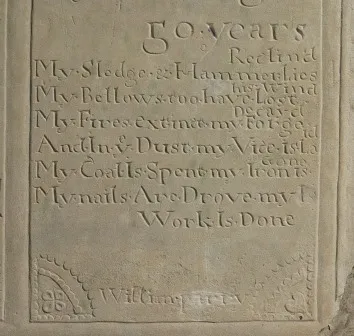
(The image is from the website of a medieval historian who researches Welsh tombs; the specific entry is HERE.)
-
Did you scroll down to all the videos below the comments? There are a few hundred more!
-
Glad to hear the good news!
-
There are some great videos on the Facebook page of the Vikingeskibsmuseet i Roskilde (Roskilde Viking Ship Museum) showing the construction, fitting out, and sailing of their various Viking vessels, from smaller rowboats to full-size ships. Because the timbers are all hand-hewn, one nice thing for us smiths is see how different axes were used for different parts of the process.
https://www.facebook.com/Vikingeskibsmuseet/videos_by
(I'm fairly sure you don't need an FB account to watch these, as they are all set to Public.)
-
My previous vise was a "frankenvise" that had been cobbled together from the parts of at least three other vises, and the screw was quite worn out. After I got my current vise, I traded the old one to an engineering professor at OSU, who machined a new screw and screwbox just for fun. (I think he may have welded the new screw onto the old knob and handle as well, using the proper pre- and post-heating, of course.)
-
Just a reminder that we have to be very careful about looking at the past through the lens of how we think about the present (this is what the historians call "presentism"). A whole lot of stuff "back in the day" was just as disposable as stuff now; we just think that everything was made to a higher standard back then because (generally) it's only the good stuff that survived.
Also, it's a good idea to remember to factor in inflation when looking at prices in the past: $10 had the same buying power just before WWI as over $300 today.
That said, I agree that it's a real shame that the economics of consumer goods these days make it cheaper to replace than to repair. However, there is a growing community of people who prefer to take some extra time and trouble to fix things themselves; I myself recently replaced the broken screen on my son's "obsolete" cell phone at a fraction of the cost of a new one.
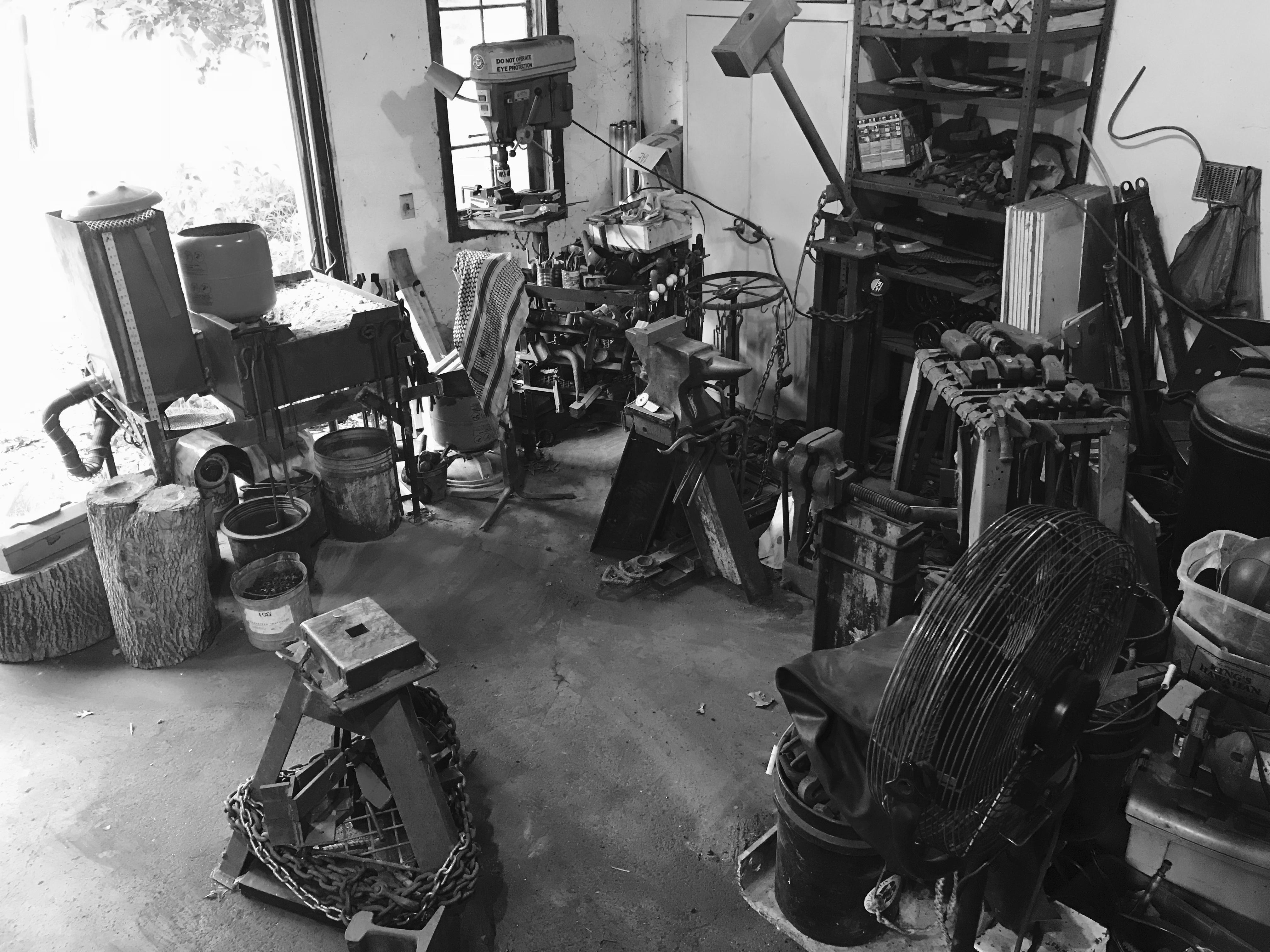

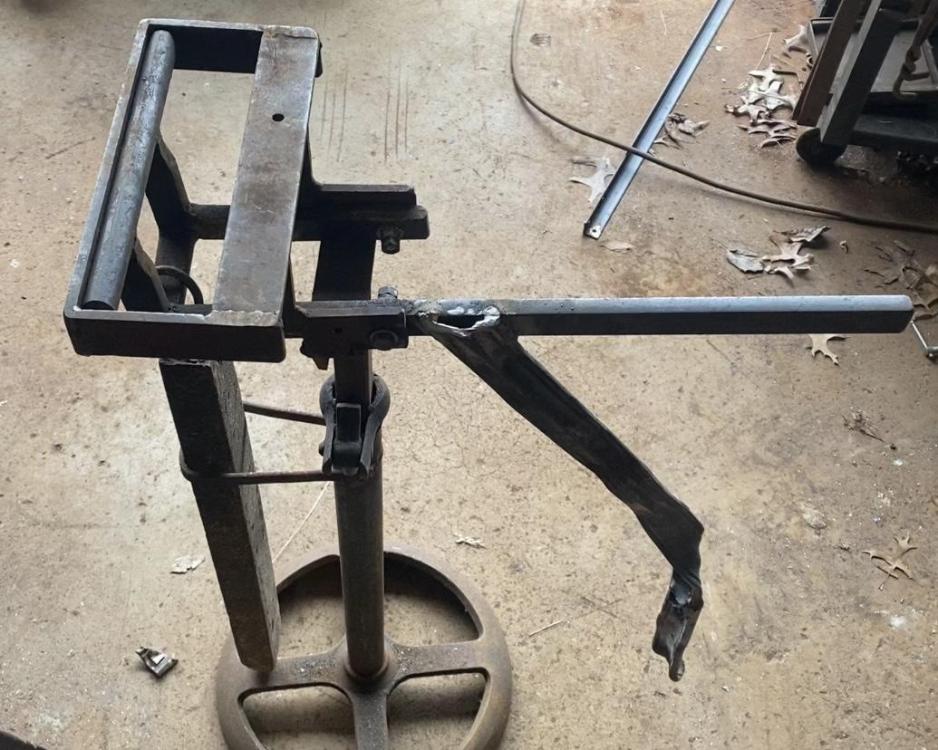
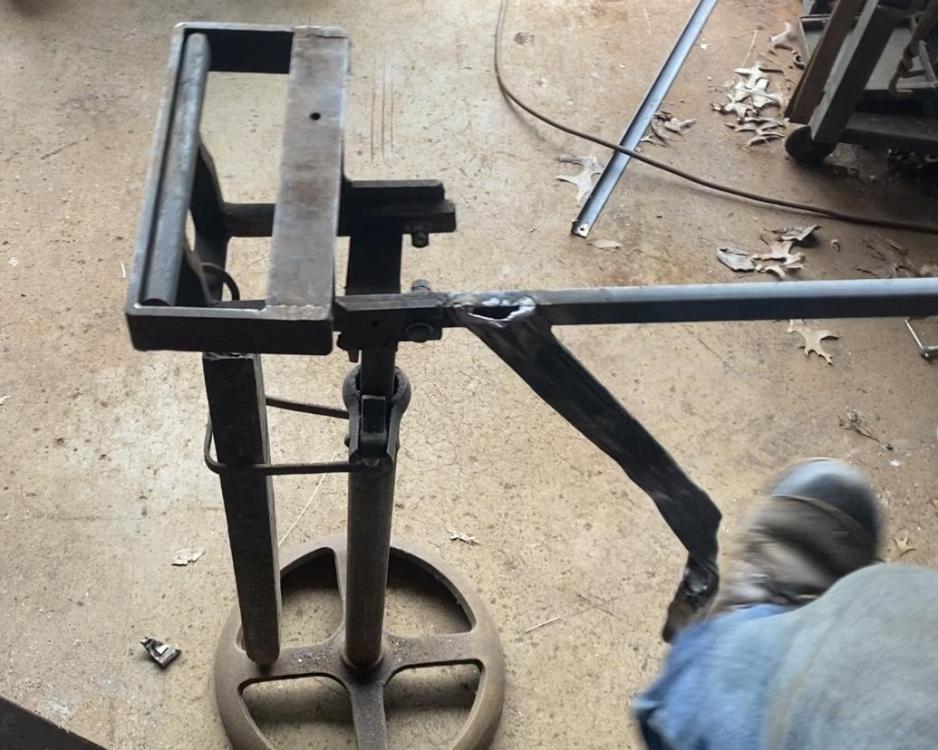
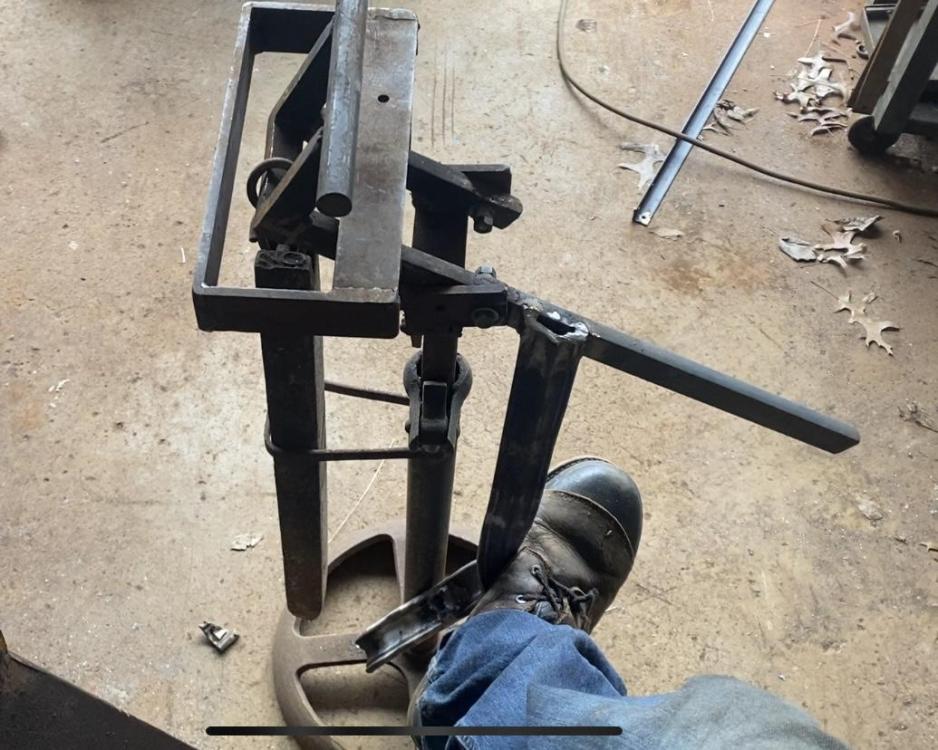
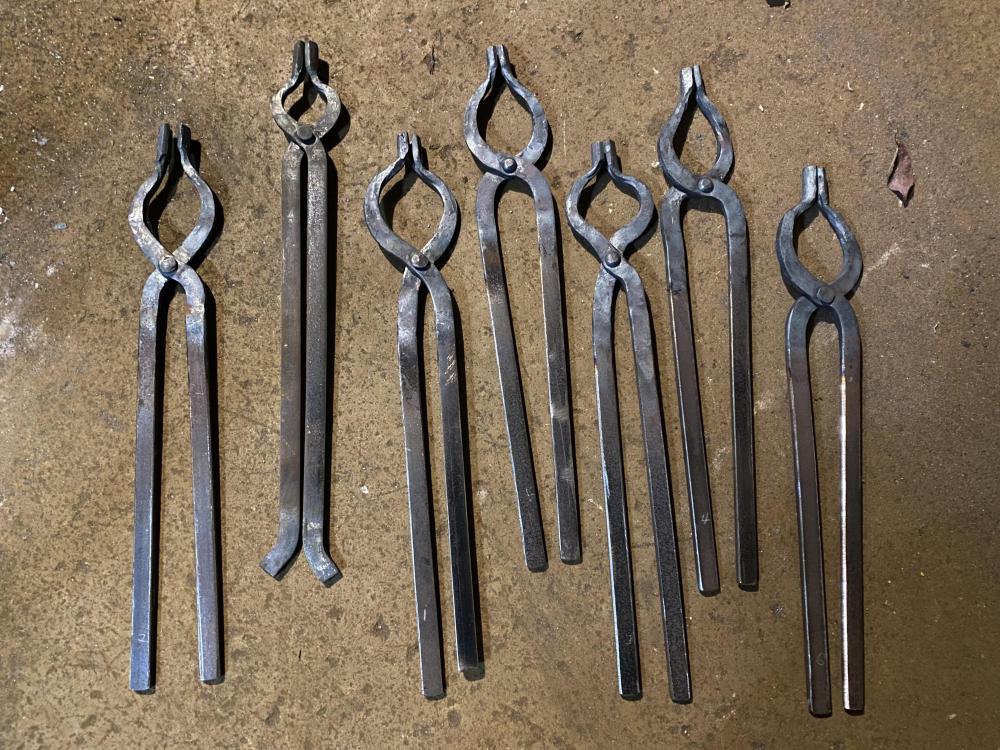
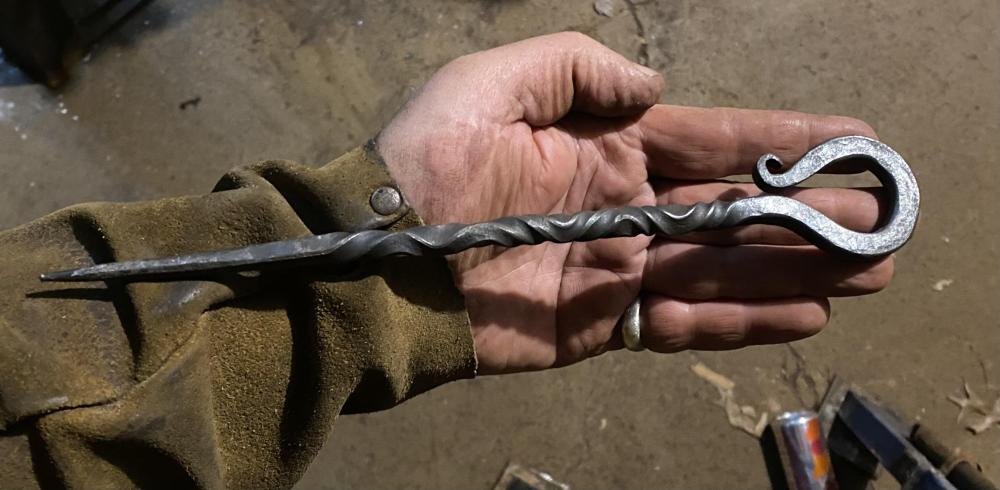
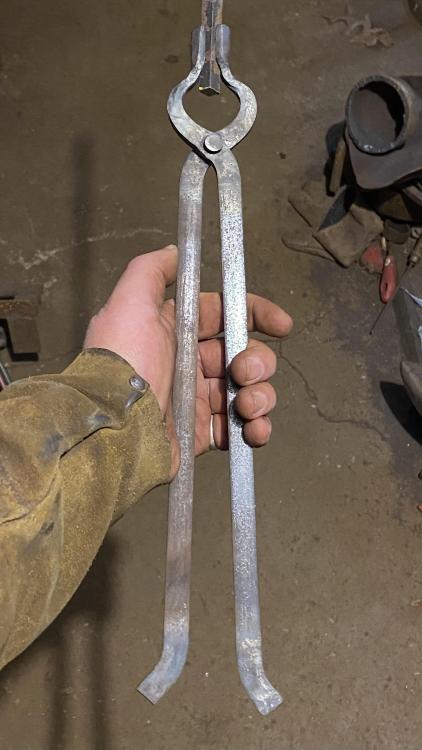
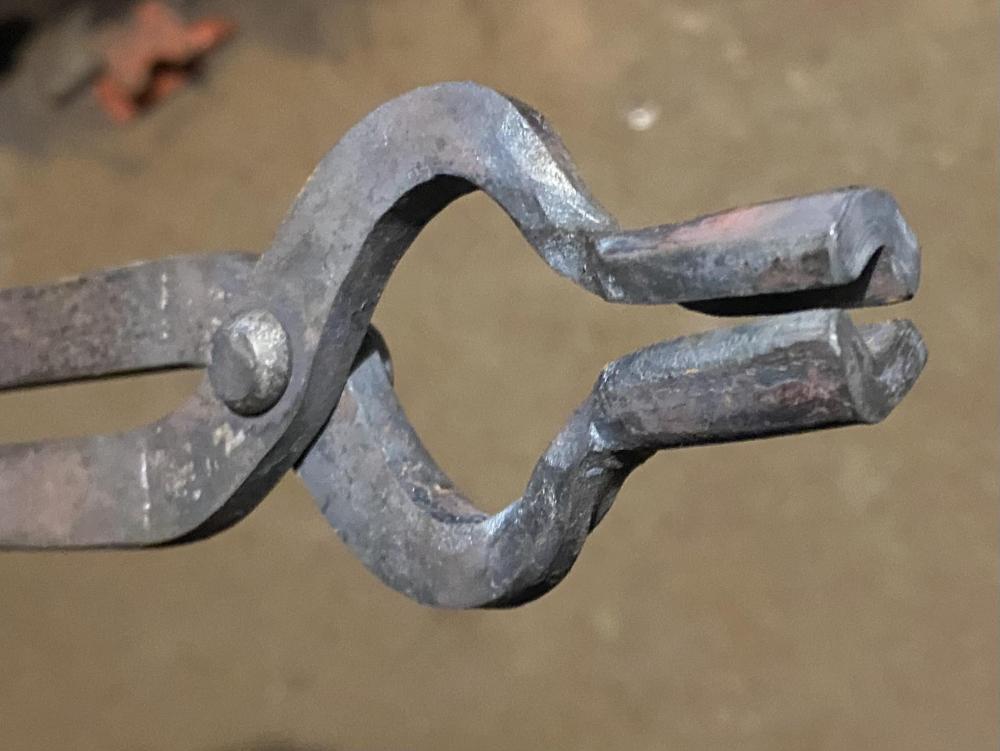
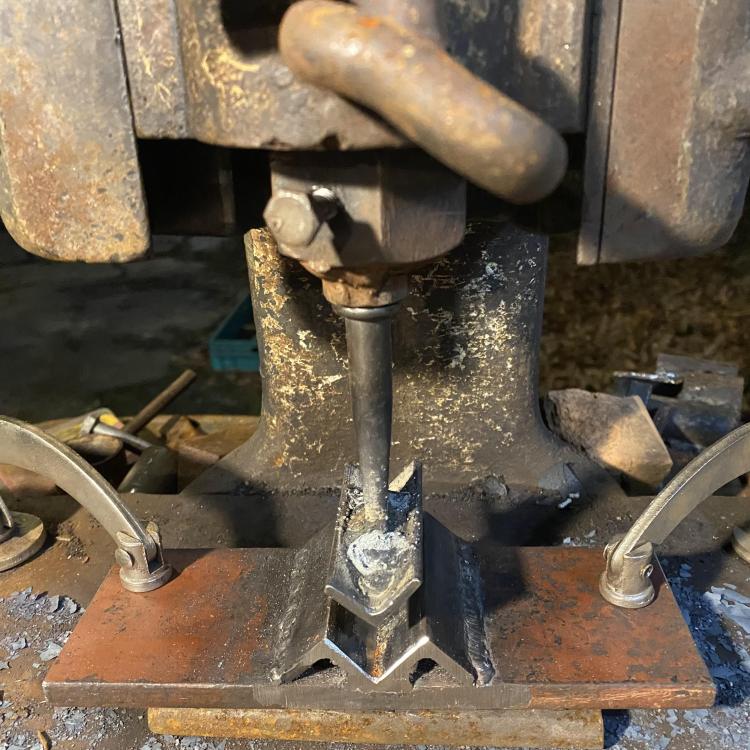
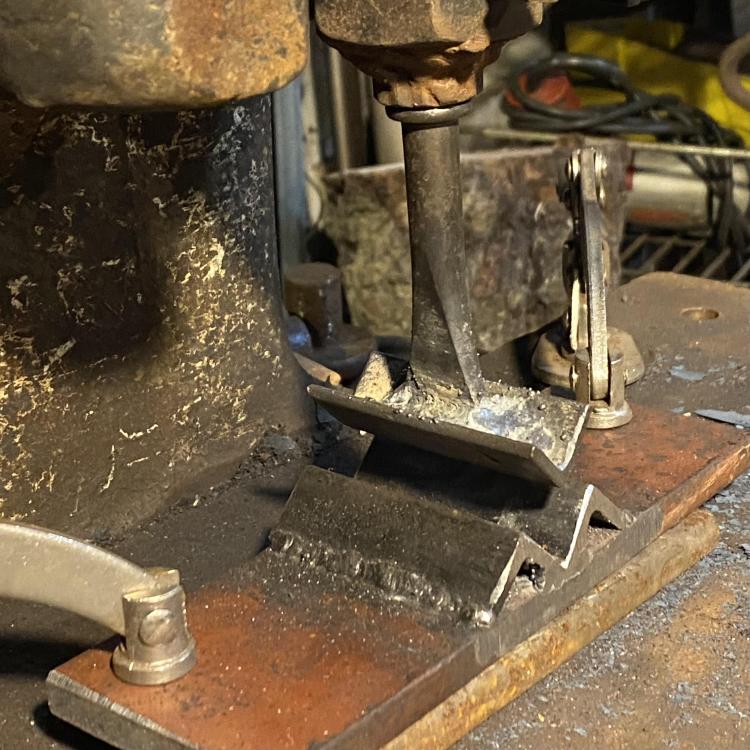
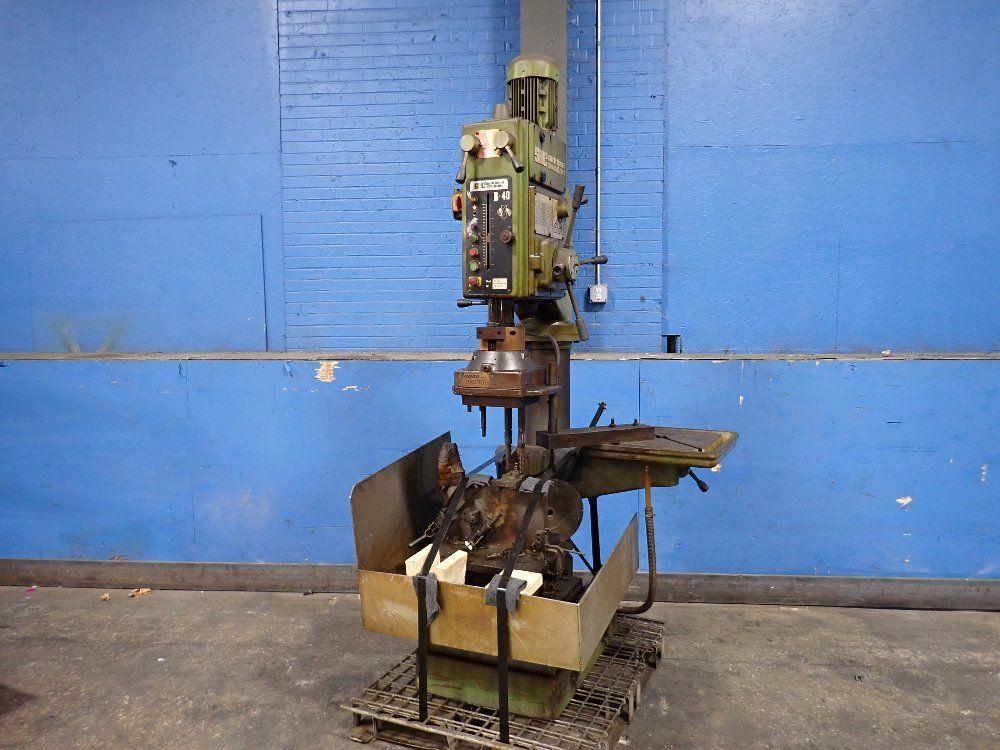
It followed me home
in Blacksmithing, General Discussion
Posted
Very pretty.
Being in Rhode Island for a business trip, I stopped by Exeter Scrap Metal to see what interesting goodies they might have put aside in their interesting goodies section. I got a nice RR spike maul head (which I plan to turn into a stake anvil) and a nice little Columbian No. 143 vise for $10 each.
There were also a nice big (~6”) Athol vise for $45 and a Champion No. 400 blower, but both were too heavy for my checked luggage and too big for a carry-on. Ah, well.